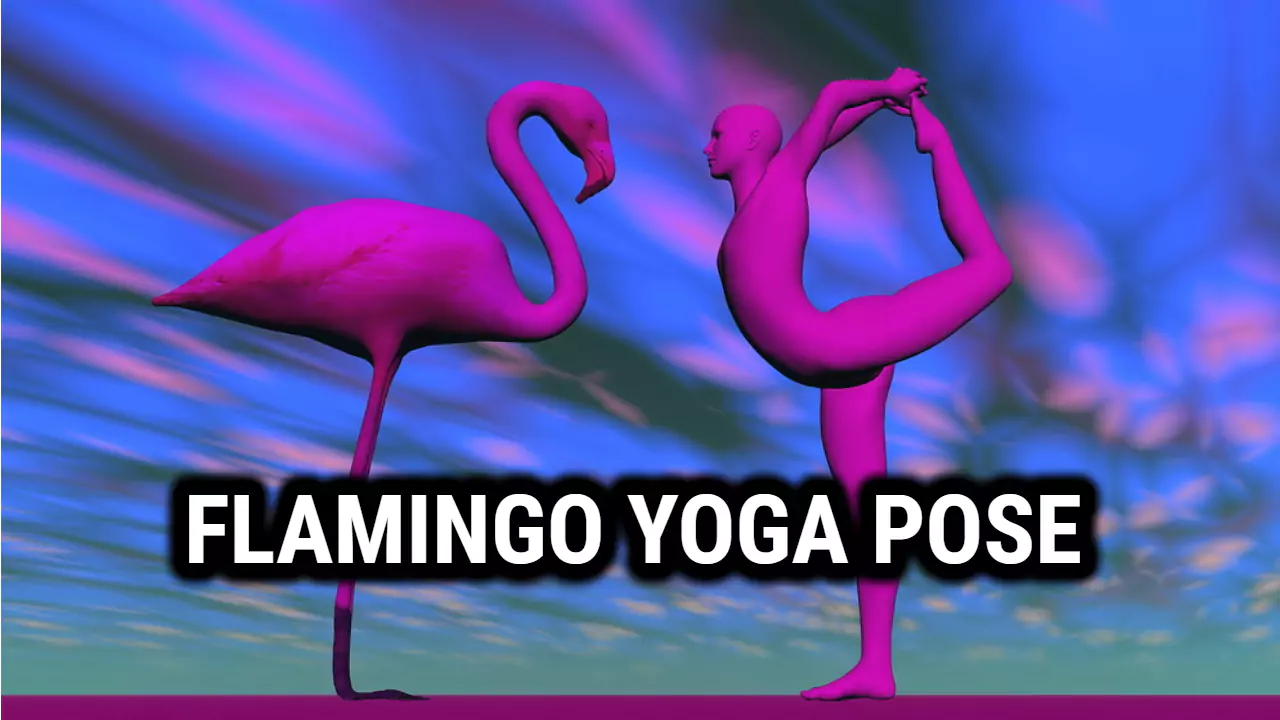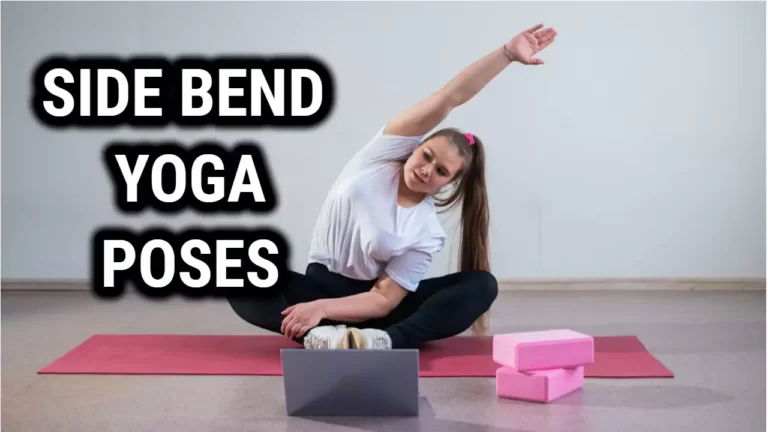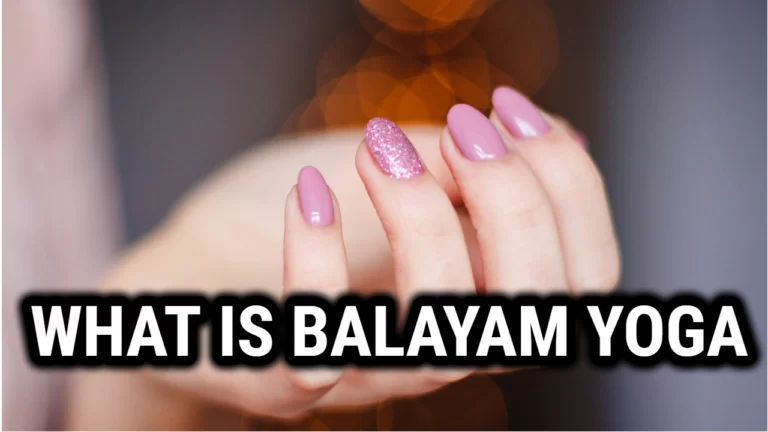Flamingo Yoga Pose – A Lesser Known Variation of Marichyasana

Yoga is known to have various poses or asanas, and one of them is the Flamingo Yoga Pose. It is a variation of the Marichyasana pose that is known for its twisting movements that help in energizing the body and mind. Flamingo Pose is a challenging yoga pose, but it is beneficial for improving balance, stretching the leg muscles, and strengthening the core. Let us discuss this pose in detail.
What is Flamingo Yoga Pose?
Flamingo Yoga Pose is a one-legged balancing yoga pose where the lifted leg is bent and held behind the back while the torso is twisted towards the lifted leg. It is also called the Humble Flamingo Pose because it involves balancing on one foot like a flamingo bird. This challenging pose requires patience, practice, and focus.
How to do Flamingo Yoga Pose?
To get into the Flamingo Yoga Pose, start in Tadasana or Mountain Pose. Shift your weight onto your left foot and bring your right knee up towards your chest. Then, clasp your right foot with your left hand and bring the right arm behind your back.
As you exhale, bend your left knee and slowly lift your right leg towards your left shoulder. Keep your spine long, and gaze forward. Hold for a few breaths.
To release the pose, slowly lower your right leg and come back to Tadasana. Repeat the same on the other side by shifting your weight onto your right foot.
What are the benefits of Flamingo Yoga Pose?
Flamingo Yoga Pose has numerous benefits that help in improving physical and mental health. Here are a few:
A. How does Flamingo Pose benefit your leg muscles?
Flamingo Yoga Pose stretches and strengthens the leg muscles, including the quadriceps, hamstrings, and calf muscles. Holding and balancing on one leg also help in improving the balance and stability of the ankle and foot muscles.
B. What are the benefits of the Flamingo Pose in improving balance?
Flamingo Yoga Pose is a balancing asana that helps in improving balance, focus, and concentration. It activates the core muscles and engages the entire body in maintaining the balance.
C. How does Flamingo Yoga Pose help in stretching the shoulders?
Flamingo Yoga Pose involves twisting the torso towards the lifted leg, which helps in stretching and opening the shoulders and chest muscles. It also improves the flexibility of the spine and promotes healthy digestion.
How is Flamingo Pose different from Marichyasana?
Flamingo Yoga Pose is a variation of the Marichyasana twisting pose. Here are some key differences between the two poses:
A. What are the similarities between Flamingo Yoga Pose and Marichyasana?
Both the poses involve twisting the torso while one leg is lifted and held behind the back. They help in improving digestion and flexibility in the spine and shoulders.
B. How does Flamingo Pose differ from Marichyasana in terms of stance?
In Flamingo Yoga Pose, the torso is twisted towards the lifted leg, whereas in Marichyasana, the torso is twisted towards the extended leg. Also, in Flamingo Pose, the lifted leg is bent and held behind the back, while in Marichyasana, the extended leg is lifted and held with both hands.
C. What muscle groups are targeted more in Flamingo Pose as compared to Marichyasana?
Flamingo Yoga Pose mainly targets the leg muscles and helps in improving balance, while Marichyasana primarily targets the hip muscles and helps in improving flexibility in the hips.
How to Perform Flamingo Yoga Pose?
Flamingo Yoga Pose requires a lot of balance and strength in the leg and core muscles. Here are some tips to help you perform the pose correctly:
1. How to improve balance in Flamingo Yoga Pose?
To improve balance in Flamingo Yoga Pose, keep your gaze focused on a fixed point in front of you. Engage your core muscles and keep your breath steady.
2. What are some common mistakes beginners make in Flamingo Yoga Pose?
Beginners often struggle with maintaining the balance and tend to collapse or lean towards one side. They also forget to keep the lifted leg bent and held behind the back, which reduces the stretch in the leg muscles.
3. How to modify Flamingo Pose for a deeper stretch?
To modify Flamingo Pose for a deeper stretch, you can shift the weight of your supporting foot towards the toes. You can also lift your gaze towards the sky while twisting your torso.
Tips and Cautions for Flamingo Yoga Pose
Flamingo Yoga Pose is a challenging pose, and it is essential to practice it under the guidance of a certified yoga teacher. Here are some tips and cautions to keep in mind:
1. How to sequence Flamingo Yoga Pose in a yoga session?
Flamingo Yoga Pose can be sequenced after the standing balance poses like Tree Pose or Warrior III. It can also be included in the hip-opening sequence like the Pigeon Pose or the Pyramid Pose.
2. What are some common precautions to take in Flamingo Yoga Pose?
Avoid this pose if you have any ankle or knee injuries. Do not force the lift of your leg. Start with a shorter hold time and gradually increase the duration.
3. How to use breathwork in Flamingo Yoga Pose for a deeper stretch?
Deep breathing can help in relaxing and releasing tension from the muscles. In Flamingo Yoga Pose, inhale as you lift your leg and exhale as you twist your torso.
Flamingo Yoga Pose is a challenging and rewarding pose that helps in improving balance, strength, and flexibility. With regular practice and proper guidance, you can master this pose and add it to your yoga routine.
FAQ’s
Q: What is flamingo pose?
A: Flamingo pose, also known as variation of Marichyasana, is a challenging yoga pose that requires balance, leg and foot stretch, and arm lift. It involves standing on one leg while bending the other leg and holding the foot with both hands raised overhead.
Q: What are the benefits of flamingo pose?
A: Flamingo pose offers several benefits, including improved balance, core strength, leg and foot flexibility and increased blood flow to the pelvic area. It also helps to release tension in the hip and thigh muscles and stimulates the digestive organs.
Q: How do I do flamingo pose?
A: To perform flamingo pose, stand in Tadasana with your feet together. Shift your weight to your left foot and bend your right knee. Clasp your right foot with both hands behind your back and point the sole of your foot towards the ceiling. Keep the length in your torso and lift your left arm overhead. Hold for several breaths and repeat on the other side.
Q: Can flamingo pose be a challenge for beginners?
A: Yes, flamingo pose can be a challenge for beginners. It requires balance, flexibility, and strength in the standing leg and core muscles. However, with practice and proper guidance from a yoga teacher, it can become easier.
Q: Should I focus on my breath during flamingo pose?
A: Yes, focusing on your breath can help you maintain balance and stay in the pose longer. Take deep breaths throughout the pose, inhale and exhale through your nose, and try to remain calm and relaxed.
Q: How can I improve my balance in flamingo pose?
A: To improve your balance in flamingo pose, focus on your inner ear and keep your gaze fixed on one point. Shift your weight slowly onto your standing foot and avoid wobbling. Hug your triceps towards your ears and engage your core and glutes.
Q: What should I do if I am unable to reach my foot in flamingo pose?
A: If you are unable to reach your foot in flamingo pose, use a yoga strap or wrap a towel around your foot to help you reach. You may also place a block or book under your raised foot for support.
Q: How long should I hold flamingo pose?
A: You can hold flamingo pose for several breaths, up to 1 minute on each side. Take 8 deep breaths in and out, and then release the pose. Repeat on the other side.
Q: How do I ensure proper alignment in flamingo pose?
A: To ensure proper alignment in flamingo pose, keep your kneecaps lifted and avoid rounding your upper body. Keep your foot flexed, your fingertips as close to the floor as possible, and your gaze fixed on one point.
Q: What is the next step after mastering flamingo pose?
A: Once you have mastered flamingo pose, you can move on to more challenging yoga poses that require balancing on one leg, such as crow pose or tree pose. You can also work on improving your balance and moving deeper into your practice with yoga teacher training or exploring the neuroscience of balance and gravity.





